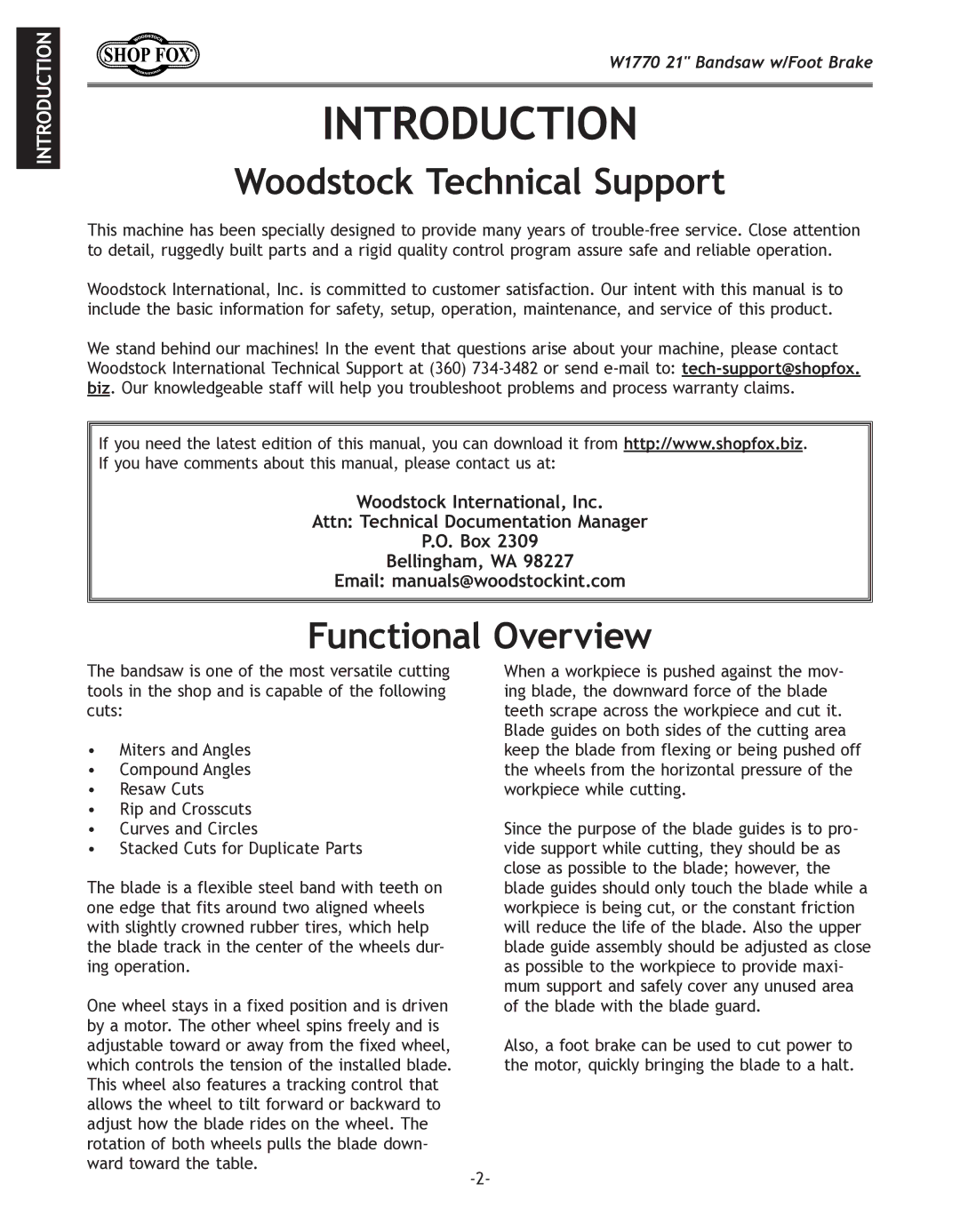
INTRODUCTION
W1770 21" Bandsaw w/Foot Brake
INTRODUCTION
Woodstock Technical Support
This machine has been specially designed to provide many years of
Woodstock International, Inc. is committed to customer satisfaction. Our intent with this manual is to include the basic information for safety, setup, operation, maintenance, and service of this product.
We stand behind our machines! In the event that questions arise about your machine, please contact Woodstock International Technical Support at (360)
If you need the latest edition of this manual, you can download it from http://www.shopfox.biz. If you have comments about this manual, please contact us at:
Woodstock International, Inc.
Attn: Technical Documentation Manager
P.O. Box 2309
Bellingham, WA 98227
Email: manuals@woodstockint.com
Functional Overview
The bandsaw is one of the most versatile cutting tools in the shop and is capable of the following cuts:
•Miters and Angles
•Compound Angles
•Resaw Cuts
•Rip and Crosscuts
•Curves and Circles
•Stacked Cuts for Duplicate Parts
The blade is a flexible steel band with teeth on one edge that fits around two aligned wheels with slightly crowned rubber tires, which help the blade track in the center of the wheels dur- ing operation.
One wheel stays in a fixed position and is driven by a motor. The other wheel spins freely and is adjustable toward or away from the fixed wheel, which controls the tension of the installed blade. This wheel also features a tracking control that allows the wheel to tilt forward or backward to adjust how the blade rides on the wheel. The rotation of both wheels pulls the blade down- ward toward the table.
When a workpiece is pushed against the mov- ing blade, the downward force of the blade teeth scrape across the workpiece and cut it. Blade guides on both sides of the cutting area keep the blade from flexing or being pushed off the wheels from the horizontal pressure of the workpiece while cutting.
Since the purpose of the blade guides is to pro- vide support while cutting, they should be as close as possible to the blade; however, the blade guides should only touch the blade while a workpiece is being cut, or the constant friction will reduce the life of the blade. Also the upper blade guide assembly should be adjusted as close as possible to the workpiece to provide maxi- mum support and safely cover any unused area of the blade with the blade guard.
Also, a foot brake can be used to cut power to the motor, quickly bringing the blade to a halt.
